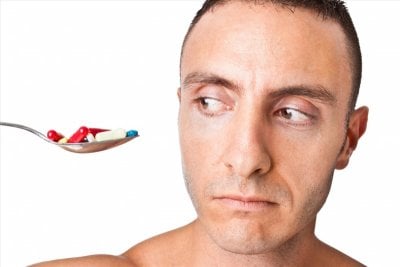Nelson Vergel
Founder, ExcelMale.com
 Not surprising data. Most of these supplements lower HDL and affect liver and kidney function.
Not surprising data. Most of these supplements lower HDL and affect liver and kidney function.Granados J, Gillum TL, Christmas KM, Kuennen MR. Prohormone supplement 3b-hydroxy-5a-androst-1-en-17-one enhances resistance training gains but impairs user health. J Appl Physiol (1985). http://jap.physiology.org/content/early/2013/12/31/japplphysiol.00616.2013.abstract
Purpose: Prohormone supplements(PS) are recognized not to impart anabolic or ergogenic effects in men, but the research supporting these conclusions is dated. The Anabolic Steroid Control Act was amended in 2004; the viability of PS have not been evaluated since that time.
Methods: 17 resistance-trained males(23+/-1yrs; 13.1+/-1.5% body fat) were randomly assigned to receive either 330mg/d 3b-hydroxy-5a-androst-1-en-17-one(PROHORMONE; n=9) or sugar(PLACEBO; n=8) p.o. and complete a 4 week(16 session) structured resistance-training program. Body composition, muscular strength, circulating lipids, and markers of liver and kidney dysfunction were assessed at study onset and termination.
Results: PROHORMONE increased lean body mass by 6.3+/-1.2%, decreased fat body mass by 24.6+/-7.1%, and increased their back squat 1-RM and competition total by 14.3+/-1.5% and 12.8+/-1.1%; respectively. These improvements exceeded(p<0.05) PLACEBO, who increased lean body mass by 0.5+/-0.8%, reduced fat body mass by 9.5+/-3.6%, and increased back squat 1-RM and competition total by 5.7+/-1.7% and 5.9+/-1.7%; respectively.
PROHORMONE also experienced multiple adverse effects. These included a 38.7+/-4.0% reduction in HDL (p<0.01), a 32.8+/-15.05% elevation in LDL (p<0.01), and elevations of 120.0+/-22.6% and 77.4+/-12.0% in LDL/HDL and C/HDL; respectively(both p<0.01). PROHORMONE also exhibited elevations in serum creatinine (19.6+/-4.3%;p<0.01) and AST(113.8+/-61.1%;p=0.05), as well as reductions in serum albumin (5.1+/-1.9%;p=0.04), ALP(16.4+/-4.7%;p=0.04), and GFR(18.0+/-3.3%;p=0.04). None of these values changed(all p>0.05) in PLACEBO.
Conclusion: The oral PS 3b-hydroxy-5a-androst-1-en-17-one improves body composition and muscular strength. However, these changes come at a significant cost. Cardiovascular health and liver function are particularly compromised. Given these findings, we feel the harm associated with this particular PS outweighs any potential benefit.
















